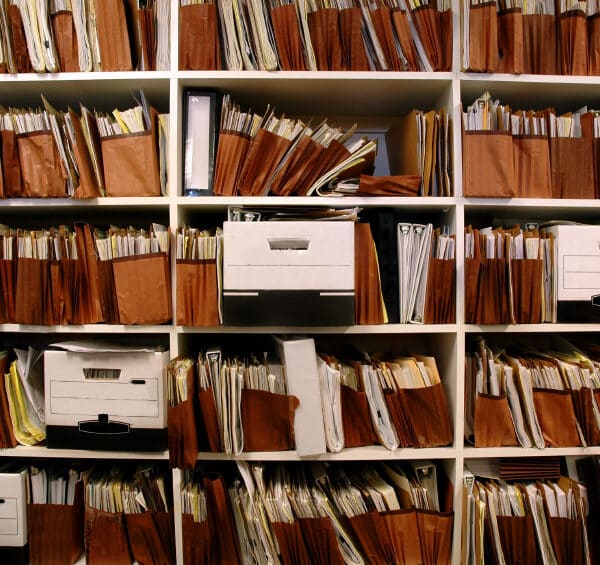 Problems with paper
Problems with paper
In my first role as a HR Manager, I remember looking at our personnel records. As they were all made of combustible paper, I immediately ordered some fireproof filing cabinets. We didn’t need many, but crucial records (relating to pension entitlements, for example) needed to be safe.
When it came to our past employees, we had records going back to people who were with us before the First World War. Interesting historically, perhaps, but not needed in a busy and somewhat tight-for-space HR office. However, ‘thinning down’ that filing cabinet was a challenge because the files were not in chronological, but alphabetical order! A lesson there for how to file for practical needs.
21st Century solutions
So far as possible, it is valuable to keep records electronically, and only electronically. Cloud based solutions are safer than paper left on desks – although on-site and off-site backups may be preferred by the anxious! Scanning paper, where original documents are not needed, saves space and makes filing and subsequent document search is so very much easier.
A word of warning. I know of an organisation which scanned masses of important documents to save space. It later transpired that some of the documents were double sided (increasingly popular to save paper), but the scanner had scanned only one side! A slight problem when the original documents had been destroyed.
Keeping large documents, such as the Employee Handbook, on a website or intranet will mean huge savings in paper, and again, it provides far easier access to policies, makes it easier (and instant) to update policies, and navigation facilities mean you can find the vital piece of information quickly.
Controlling access
On the technological side, what is called an ‘active directory’ on computer server systems (such as Micrsoft’s Small Business Server) provides the opportunity for an incredible (and rarely fully needed) level of control. It means you can control who has access to which data on your computer system, who can amend that data, and who has the authority to destroy it. These are just a few examples of the power of retaining information on computers. Bringing your IT support on-board to help develop a paperless office will not only make your records more secure and more manageable, it will improve your working environment and help save the planet. You will, however, need to trust your IT people and bind them to meeting data protection requirements.
There are also numerous software systems specifically designed for managing HR records. If you contact Employer Solutions we can point you in the right direction.
Retaining records
There is then the question of how long to retain records. Here there are legal requirements and good practice needs.
These are some important legal ones,* among some 13 or more.
In order to be protected employers need to think about keeping employee records for as long as they might be needed. In some cases it would be safer to go beyond the legal minimum. Here is guidance on some of the more important ones:*
*Taken from the CIPD Factsheet on retention of HR records.
Records containing personal data should be kept securely both in terms of risk of unauthorised access and from accidental destruction (such as in a fire). The Data Protection Act requires that such data is kept no longer than is needed and must be securely destroyed afterwards.
It is a complex area; one which was no doubt simpler before the First World War.
Malcolm Martin of Employer Solutions – QCS HR Expert contributor







